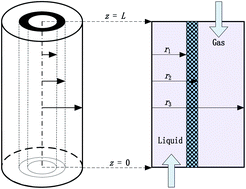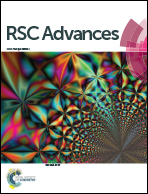Numerical investigation of the effects of polypropylene hollow fibre membrane structure on the performance of CO2 removal from flue gas
Abstract
Carbon dioxide (CO2) absorption from flue gas by hollow fibre membrane contactors is considered as a clean, highly efficient and promising decarburisation technique. Herein, a two-dimensional mathematical model is developed for CO2 absorption from parallel countercurrent mixed gas by a hollow fibre membrane contactor. Using the finite element method, the fibre membrane structure effect on CO2 removal efficiency and mass transfer performance were simulated, including the inner diameter, wall thickness, length, packing density, porosity and tortuosity factor. Three absorbents were chosen: EEA (ethyl-ethanolamine), EDA (ethylenediamine) and PZ (piperazine). The axial and radial diffusion in the membrane contactor, diffusion in the fibre and membrane pores and non-wetting conditions were considered. The simulation results showed that the CO2 removal efficiency and mass transfer rate were reduced with increasing wall thickness, inner diameter and tortuosity factor, and the performance was enhanced with increasing length, packing density and porosity. However, the effects of porosity and tortuosity factor were weak; thus, it was very favourable for making the module. The CO2 removal performance was excellent for a wall thickness in the range of 30–50 μm, an inner diameter of 90–110 μm, a length greater than 150 mm, and a packing density of 21–25% of the membrane structure.


 Please wait while we load your content...
Please wait while we load your content...